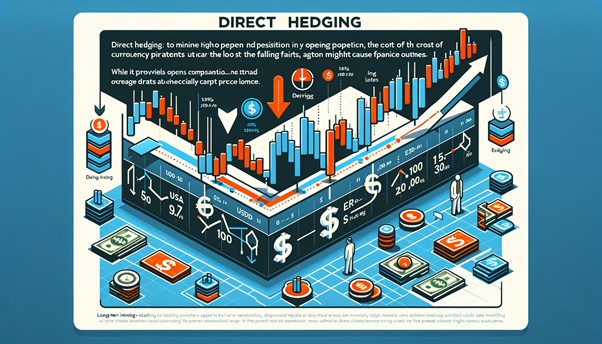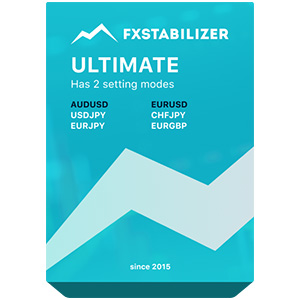
What does Forex hedge mean? The direct interpretation of the term “hedge” is a fence. Figuratively, it can mean insurance or a guarantee. In a broad sense, hedging can be understood as actions aimed at reducing the risk of unfavorable changes in the price of a particular asset. The characteristics of these actions may vary depending on the unique aspects of the market. This article offers a detailed description of Forex hedging and the best strategies for using it.
What is Hedging in Forex?

When most people think of the Forex, they imagine many currencies traded in the market simultaneously. This is true. Changes in the prices of these currencies can bring traders both losses and profits. An experienced trading specialist can hedge and ultimately succeed with almost any price fluctuation.
When the question “What is hedging in Forex?” arises, it is convenient to answer with the example of managing your income. For instance, you can imagine that you work for a European company but live in the USA. You will receive your salary in euros and spend your money in dollars. In this case, exchange rate fluctuations can result in reduced buying power.
Here, it is convenient to use hedging Forex. Let's say the EUR/USD pair rate is 1.3. This means that with a salary of 5,000 euros per month, you will receive $6,500. However, if the rate falls, say, to 1.25, then in a month, you will receive only $6,250. This is a significant reduction.
To hedge in Forex such risks, you can open a short position on the Forex market at the beginning of the month, selling EUR/USD. If the exchange rate falls, you can earn the same 250 US dollars. What will happen if quotes rise? In this case, you will lose on Forex, but the purchasing power of your 5,000 euros will increase, and in the end, you will not lose anything.
Pros and Cons of Hedging in Forex
After learning what is hedging in Forex trading, it is important to look at its advantages and disadvantages. Despite all its usefulness, it is not flawless. Let's explore the pros and cons of this approach.
The main merit of hedging is that it is often more useful than diversification. The fact is that diversification does not fully compensate for losses. This happens because if there are a large number of assets, the correlation between them is positive. This means a portfolio will suffer in a falling market, no matter how well it is diversified.
Yet, hedging has its drawbacks. Like any insurance, it costs money. Therefore, it is usually used for short time intervals. It is too expensive to constantly keep a hedge — this can reduce its profitability. Moreover, this tool is quite complex, and beginners may misunderstand it. Undoubtedly, traders should be aware of the benefits of hedging, but they must be used wisely, taking into account all market factors.
Common Forex Hedging Strategies
Hedging meaning in Forex varies depending on the approach. Numerous hedging strategies can mitigate the risks associated with price fluctuations. For instance, if you predict a decline in the market, you may want to safeguard your funds from the uncertainty. In this case, hedging strategies are at your disposal to help you calm your mind and mitigate risks.
Direct Forex hedging strategy

Direct hedging involves initiating a trade that opposes the direction of a current bid. Let's say, you have an open long EUR/USD position. You may try opening a sell position on the same pair. As a result, in a falling market, you receive partial compensation and smooth out the portfolio drawdown.
This type offers a simple and efficient solution to minimize trading risk. At the same time, it may incur significant expenditures for the trader. The spread will be paid twice, and this may be dangerous for your financial outcome.
It seems that the net profit with this approach will be zero. So why use it? Often, direct hedging is practiced by long-term investors who keep buying positions and want them to continue rather than be closed as market conditions change.
For example, if you are expecting some important news that could lead to a price drop, it makes sense to create a short position in parallel. Also, traders often use direct hedging to protect the profits they have already made from a trade. This is achieved by opening new short positions against an existing long one.
Forex correlation hedging strategy

How to hedging in Forex if you trade multiple currency pairs? This approach involves a higher level of complexity, but it may be definitely useful for you. A multi-currency hedge occurs when you have a long position and an opposing short position in one of those currencies.
For example, you can go long on the GBP/USD market and short on the USD/JPY market. In this case, you will be highly protected from exposure to US dollars. However, this approach does not account for the fluctuations of other currencies you are dealing with. In these cases, if the JPY or GBP fluctuates, you will still be exposed to risk.
This approach works because some Forex pairs exhibit a strong correlation with one another. You can see the correlation coefficient ranging from -1 to +1. Closeness to +1 indicates that the currencies will move the same way on the charts. For instance, it is a well-known fact that the euro and pound sterling are highly correlated since both the European and British economies have close ties. Such correlations happen to many other pairs as well.
The advantage of correlation hedging is that this strategy is completely legal in all countries. On the other hand, no currency is completely correlated with another, and some risks still remain.
Forex options hedging strategy

An option in Forex is an agreement to exchange at a certain price in the future. It is a common tool used by traders who want to hedge their position. This type of hedging can be understood using an example.
Let's say you opened a long position on the EUR/USD pair at 1.3, expecting the chart to go up. However, then you thought about new economic data that might be released soon and was guaranteed to cause the price to fall. To reduce this risk, you can use an option with a strike price of around $1.25 with an expiration date after the new data is released.
If the pair then goes lower, you will receive a payout on your option depending on the specified contract terms. If the news does not become true and the pair continues to move higher, you will be able to continue to hold the long position and will only lose the reward provided in the option contract.
Factors to Consider When Hedging in Forex
- Price. Hedging costs money. This is especially true for strategies using options. The commissions associated with contracts can significantly affect your earnings. Therefore, it is so important to analyze the possible benefits and compare them with the costs.
- Complexity. Obviously, hedging (especially strategies that involve options and futures) can require a deep understanding of financial mechanisms. Traders should have a solid grasp of market dynamics and know how it works to avoid making unprofitable mistakes.
- Rules. As discussed below, hedging requires knowledge of the regulatory framework. Some forms may be limited or completely prohibited in certain states. Of course, traders are required to comply with local laws and take into account existing restrictions.
- Market volatility. Understanding and predicting market volatility is critical in hedging strategies. Interestingly, high volatility can both create an opportunity and pose a threat to hedging.
- Liquidity. Liquidity can affect the cost of hedging and, as a result, your profit. If you trade in highly liquid markets, using a hedge will not be the most difficult task for you.
- Time frame. We mentioned above that hedging is most often used for short-term transactions. This is due to the cost of using this tool. Thus, a solid comprehension of what time frame you plan to make money on is crucial for final success.
- Risk tolerance. This is one of the key elements in any trading strategy. Obviously, it must be taken into account when using hedging. For example, more conservative traders are more likely to choose to insure themselves against risks.
The market is an extremely hard equation that contains dozens of factors. Regardless of your level of experience, you can’t incorporate all of them. And the best Forex robots can do it. They analyze automatically dozens of indicators and provide you with the best outcomes. Obviously, expert advisors can help you to exploit the divergence better and faster.
Is Hedging in Forex Legal?
Now, you know what is FX hedging. But this is not enough to start using it right now. First, you need to check the legislation. The legacy of hedging is a complex issue because it is regulated differently in different countries. For example, some hedging transactions are not allowed in the United States. The Commodity Futures Trading Commission (CFTC) prohibits traders from using direct hedging strategies on the same account. In other countries, such as Europe, Asia, or Australia, hedging is a legal activity, and you can even use a hedge robot or something else to implement this into your trading activities. So, there is no sole answer to the question, “Is hedging in Forex illegal?” Before implementing FX hedging strategies, check the legislation in your country or consult with a qualified professional.
The Bottom Line
Forex hedging is an effective and reliable method that protects the trader from incurring losses during the execution of a trade transaction. Typically, these risks are associated with volatility, changes in exchange rates, news, and crises in the economy. This trading instrument insures the funds of market participants against losses.
Of course, when hedging, you pay higher interest rates for this insurance. However, this tool is well worth its cost. To learn how to hedge in Forex, it makes sense to practice your Forex hedging techniques on a demo account. This way, you will better understand the principles of the method and not risk your money.









